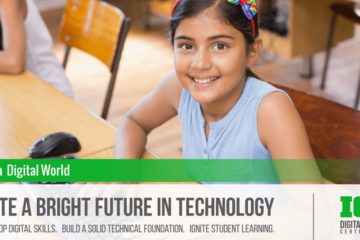Education technology, abbreviated as EdTech, can work wonders if educators and teachers collaborate to develop the latter’s teaching capabilities, and help drip its benefits to the students. This article explores the various dimensions of how EdTech can influence the teaching capabilities of teachers.
The Need for EdTech in Modern-Age Education
Being a teacher seems an easy job, but in reality, it isn’t. As a teacher, you are influencing an entire generation, and which is why your responsibility as their teacher, guide, and yes, as an idol increases multiple folds. In India, education has remained conventional for years, with teachers and educators following the same age-old teaching and learning techniques across generations. Interestingly, all of them did a reasonably satisfactory job until lately, and the world too didn’t seem to have concerns about it. But then, in came technology, and it gradually got on a disruption spree, intervening various business processes to finally reach the education sector and influence it.
Today, technology has dripped deep in education. It has transformed into a revolution causing a paradigm shift in education, its approach, and transforming the techniques that have governed it since time immemorial.
And, it isn’t just education that has changed. The influx of technology has made new-age parents more demanding, students smarter, educators more dynamic than ever. Amidst the existing situation, and the projected one, teachers, who constitute the most critical of all the elements, cannot remain aloof. They need to keep up with time, and integrate technology within their teaching techniques to ensure sustenance within the ever-growing demands of students and parents, and prepare students for the extremely competitive, fierce and technology-oriented future ahead.
Why? Technology simplifies and expedites learning. For instance, modern-age learning elements such as audio-visual classrooms, interactive learning, etc. can help students understand concepts better, and apply whatever they’ve learned in the class, in their routines. However, at the outset, it is teachers who need to start the ball rolling!
How does EdTech Influence Routine Teaching Practices?
EdTech fundamentally covers two areas. First – augmenting the existing teaching techniques, and second – by enhancing and expanding what they’ll be able to do. So, let us take a look at both these points.
- Enhancing Current Teaching Practices
Classroom periods with a teacher scribing and illustrating something on a blackboard, and students listening (or only hearing) to the teacher has been a regular sight in Indian schools for years. While some of them, the bright sparks, used to grasp things easily, some of them struggled to understand things, and the rest, oblivious towards what’s happening around!
But, fortunately, times are changing, as technology, with innovating training techniques and channels such as YouTube educational videos (edutainment is what they call it nowadays), help make the learning experience more engaging, interactive. Most importantly, these channels try and bring everyone on the same page of understanding.
Integrating technology in the teaching technique isn’t about changing the way you teach or eliminating the presence of teachers in the classroom. Instead, it is more about enhancing the instructional value and improving the efficacy of the current teaching practices to ensure that students remember everything that is taught to them forever.
- Capacity Building through Technology
Let us now take a look at how technology can help expand the existing capacity of teachers to help them introduce and implement new practices.
Technology has changed almost everything. Right from the way we talk to the way we work. It has helped us improve our efficiency, and simplify routine tasks. Education isn’t an exception to this. Technology can play a similar role here by helping teachers build their capacity, and subsequently make a difference to students and the way they learn.
Technology-oriented tools such as Newsela, Lexia Core5 Reading, etc. can help teachers address the learning needs of every student. A set of many other tools can facilitate a snapshot report of a student’s progress and devise ways to help him improve.
Besides, technology-based tools like NoRedInk and Ecree facilitate instant feedback on the essay writing skills and grammar of students, thus creating teachers the bandwidth to frame feedback on the other writing elements such as the student’s writing style, reasoning, etc.
Technology can also help teachers make their teaching sessions more interactive, engaging and intriguing for the students to learn better and quicker. Technology, therefore, serves as an enhancement augmenting the capacities of the teacher. The time saved through the application of technology in the learning methods can be later used for the development of value-based elements such as personalized attention towards every student, and strengthening the student-teacher bond.
Challenges Involved in Capacity Building through EdTech
Yes, there are challenges as well. Often, teachers are so overwhelmed with the routine teaching part that they hardly find the time to think about innovations, technological enhancements, and expansion. Quite understood, but then this restricts the teacher’s potential, confining his, and to a large extent, the growth of his students as well.
Another challenge is that of the dynamic nature of technology. Something that you slog for and learn today may suddenly be rendered obsolete tomorrow! This results in reluctance toward technology adoption. Besides, replacing something that has been working for years with something absolutely new can incur time, efforts, as well as costs. There are chances that the teacher turns the whole thing down and continue treading the same old path! Nonetheless, amidst all these challenges, some teachers are trying their best to enhance and expand their capabilities through technology.
Conclusion
It isn’t a cakewalk for teachers to improve through technology. It requires persistent efforts, and moreover the determination to make a positive difference by improving the learning efficiency of students through innovative, interactive, and interesting teaching techniques. Things have changed and will keep changing. Teachers need to be smart enough to identify these changes and keep up with them.


